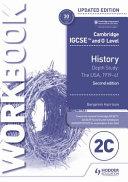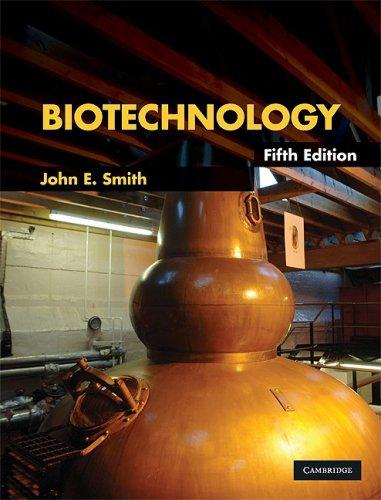(Ebook) Cambridge IGCSE and O Level History Workbook 2C - Depth Study: the United States, 1919-41 2nd Edition by Benjamin Harrison ISBN 9781398375147, 9781398375048, 1398375144, 1398375047
https://ebooknice.com/product/cambridge-igcse-and-o-level-historyworkbook-2c-depth-study-the-united-states-1919-41-2nd-edition-53538044

(Ebook) Biotechnology by Smith J.E. ISBN 9780521884945, 0521884942
https://ebooknice.com/product/biotechnology-2047728
(Ebook) Tactical Medicine Essentials by John E. Campbell, E. John Wipfler III, Jim Smith, Lawrence E. Heiskell ISBN 9781284030297, 1284030296
https://ebooknice.com/product/tactical-medicine-essentials-46072734


(Ebook) Jones Men by Vern E. Smith; Vern E. Smith ISBN 9781495617867, 9780989141185, 1495617866, 0989141187
https://ebooknice.com/product/jones-men-49087182
(Ebook) The Oxford Handbook of Canadian Politics by John C. Courtney, David E. Smith, (editors ISBN 9780195335354, 019533535X
https://ebooknice.com/product/the-oxford-handbook-of-canadianpolitics-49895594


established biological technology.The number ofregistered drugs for example may exceed some fifty by the year 2000.
During the last 25 years,several fundamental methods have been developed. Gene transfer in higher plants or vertebrates and sequencing ofgenes and entire genomes and even cloning ofanimals has become possible.
Some 15 microbes,including bakers yeast have been genetically identified. Even very large genomes with billions ofsequences such as the human genome are being investigated.Thereby new methods ofhighest efficiency for sequencing,data processing,gene identification and interaction are available representing the basis ofgenomics – together with proteomics,a new field ofbiotechnology.
However,the fast developments ofgenomics in particular did not have just positive effects in society.Anger and fear began.A dwindling acceptance of “Biotechnology”in medicine,agriculture,food and pharma production has become a political matter.New legislation has asked for restrictions in genome modifications ofvertebrates,higher plants,production ofgenetically modified food,patenting oftransgenic animals or sequenced parts ofgenomes.Also research has become hampered by strict rules on selection ofprograms, organisms,methods,technologies and on biosafety indoors and outdoors.
As a consequence process development and production processes are ofa high standard which is maintained by extended computer applications for process control and production management.GMP procedures are now standard and prerequisites for the registation ofpharmaceuticals.Biotechnology is a safe technology with a sound biological basis,a high-tech standard,and steadily improving efficiency.The ethical and social problems arising in agriculture and medicine are still controversial.
The authors ofthe Special Issue are scientists from the early days who are familiar with the fascinating history ofmodern biotechnology.They have successfully contributed to the development oftheir particular area ofspecialization and have laid down the sound basis ofa fast expanding knowledge.They were confronted with the new constellation ofcombining biology with engineering. These fields emerged from different backgrounds and had to adapt to new methods and styles ofcollaboration.
The historical aspects ofthe fundamental problems ofbiology and engineering depict a fascinating story ofstimulation,going astray,success,delay and satisfaction.
I would like to acknowledge the proposal ofthe managing editor and the publisher for planning this kind ofpublication.It is his hope that the material presented may stimulate the new generations ofscientists into continuing the rewarding promises ofbiotechnology after the beginning ofthe new millenium.
Zürich,August 2000Armin Fiechter
1
History of Secondary Metabolism
The practice ofindustrial microbiology (and biotechnology) has its roots deep in antiquity [1].Long before their discovery,microorganisms were exploited to serve the needs and desires ofhumans,i.e.,to preserve milk,fruit,and vegetables,and to enhance the quality oflife with the resultant beverages,cheeses, bread,pickled foods,and vinegar.In Sumeria and Babylonia,the oldest biotechnology know-how,the conversion ofsugar to alcohol by yeasts,was used to make beer.By 4000BC,the Egyptians had discovered that carbon dioxide generated by the action ofbrewer’s yeast could leaven bread,and by 100BC,ancient Rome had over 250 bakeries which were making leavened bread.Reference to wine, another ancient product offermentation,can be found in the Book ofGenesis, where it is noted that Noah consumed a bit too much ofthe beverage.Wine was made in Assyria in 3500BC As a method ofpreservation,milk was converted to lactic acid to make yoghurt,and also into kefir and koumiss using Kluyveromyces species in Asia.Ancient peoples made cheese with molds and bacteria.The use ofmolds to saccharify rice in the Koji process dates back at least to 700AD By the 14th century AD,the distillation ofalcoholic spirits from fermented grain,a practice thought to have originated in China or The Middle East,was common in many parts ofthe world.Interest in the mechanisms ofthese processes resulted in the later investigations by Louis Pasteur which not only advanced microbiology as a distinct discipline but also led to the development ofvaccines and concepts ofhygiene which revolutionized the practice ofmedicine.
In the seventeenth century,the pioneering Dutch microscopist Antonie van Leeuwenhoek,turning his simple lens to the examination ofwater,decaying matter,and scrapings from his teeth,reported the presence oftiny “animalcules”,i.e.,moving organisms less than one thousandth the size ofa grain of sand.Most scientists thought that such organisms arose spontaneously from nonliving matter.Although the theory ofspontaneous generation,which had been postulated by Aristotle among others,was by then discredited with respect to higher forms oflife,it did seem to explain how a clear broth became cloudy via growth oflarge numbers ofsuch “spontaneously generated microorganisms” as the broth aged.However,three independent investigators,Charles Cagniard de la Tour ofFrance,Theodor Schwann,and Friedrich Traugott Kützing of Germany,proposed that the products offermentation,chiefly ethanol and carbon dioxide,were created by a microscopic form oflife.This concept was bitterly opposed by the leading chemists ofthe period (such as Jöns Jakob Berzelius,Justus von Liebig,and Friedrich Wöhler),who believed fermentation
was strictly a chemical reaction;they maintained that the yeast in the fermentation broth was lifeless,decaying matter.Organic chemistry was flourishing at the time,and these opponents ofthe living microbial origin were initially quite successful in putting forth their views.It was not until the middle ofthe nineteenth century that Pasteur ofFrance and John Tyndall ofBritain demolished the concept ofspontaneous generation and proved that existing microbial life comes from preexisting life.It took almost two decades,from 1857 to 1876,to disprove the chemical hypothesis.Pasteur had been called on by the distillers of Lille to find out why the contents oftheir fermentation vats were turning sour. He noted through his microscope that the fermentation broth contained not only yeast cells but also bacteria that could produce lactic acid.One ofhis greatest contributions was to establish that each type ofbioprocess is mediated by a specific microorganism.Furthermore,in a study undertaken to determine why French beer was inferior to German beer,he demonstrated the existence of strictly anaerobic life,i.e.,life in the absence ofair.
The field ofbiochemistry originated in the discovery by the Buchners that cell-free yeast extracts could convert sucrose into ethanol.Later,Chaim Weizmann ofthe UK applied the butyric acid bacteria,used for centuries for the retting offlax and hemp,for production ofacetone and butanol.His use of Clostridium during World War I to produce acetone and butanol was the first nonfood bioproduct developed for large-scale production;with it came the problems ofviral and microbial contamination that had to be solved.Although use ofthis process faded because it could not compete with chemical means for solvent production,it did provide a base ofexperience for the development oflarge scale cultivation offungi for production ofcitric acid after the First World War,an aerobic process in which Aspergillus niger was used.Not too many years later,the discoveries ofpenicillin and streptomycin and their commercial development heralded the start ofthe antibiotic era.
For thousands ofyears,moldy cheese,meat,and bread were employed in folk medicine to heal wounds.It was not until the 1870s,however,that Tyndall, Pasteur,and William Roberts,a British physician,directly observed the antagonistic effects ofone microorganism on another.Pasteur,with his characteristic foresight,suggested that the phenomenon might have some therapeutic potential.For the next 50years,various microbial preparations were tried as medicines,but they were either too toxic or inactive in live animals.The golden era ofantibiotics no doubt began with the discovery ofpenicillin by Alexander Fleming [2] in 1929 who noted that the mold Penicillium notatum killed his cultures ofthe bacterium Staphylococcus aureus when the mold accidentally contaminated the culture dishes.After growing the mold in a liquid medium and separating the fluid from the cells,he found that the cell-free liquid could inhibit the bacteria.He gave the active ingredient in the liquid the name “penicillin” but soon discontinued his work on the substance.The road to the development ofpenicillin as a successful drug was not an easy one.For a decade,it remained as a laboratory curiosity – an unstable curiosity at that.Attempts to isolate penicillin were made in the 1930s by a number ofBritish chemists,but the instability ofthe substance frustrated their efforts.Eventually,a study began in 1939 at the Sir William Dunn School ofPathology ofthe University ofOxford by
